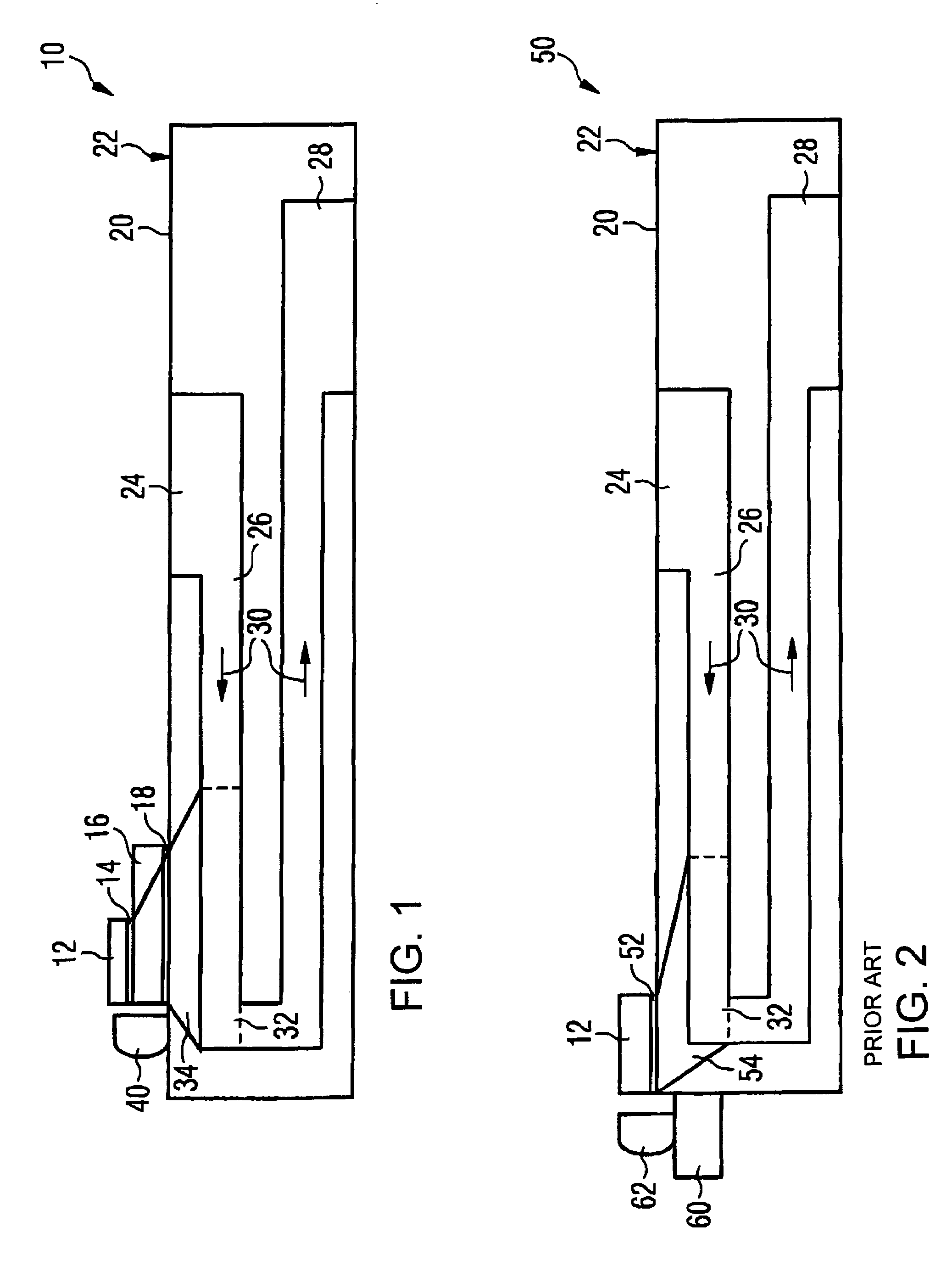Semiconductor device with a cooling element
- Summary
- Abstract
- Description
- Claims
- Application Information
AI Technical Summary
Benefits of technology
Problems solved by technology
Method used
Image
Examples
Embodiment Construction
[0034]The semiconductor device 10 illustrated in section in FIG. 1 comprises a power laser diode bar 12, which is soldered onto a microooler 20 having a coolant inlet 24 on its upper face, a cooling channel 26 in its interior and a coolant outlet 28 on its bottom face. The direction of flow of the coolant in the microcooler 20 is indicated by arrows 30.
[0035]Cooling channel 26 comprises, in a region 32 beneath power laser diode bar 12, microstructures, for example a plurality of channels each measuring 0.3 mm in width and height. Such microstructures cause turbulence in the flowing coolant by means of which the exchange of heat between the coolant and the microcooler can be configured very effectively.
[0036]The length of the microstructured region 32 in cooling channel 26 is at least equal to the length of power laser diode bar 12, which completely overlaps microstructured region 32 at least in this direction of extent. Preferably, as illustrated in FIG. 1, the length of microstruct...
PUM
 Login to View More
Login to View More Abstract
Description
Claims
Application Information
 Login to View More
Login to View More - R&D
- Intellectual Property
- Life Sciences
- Materials
- Tech Scout
- Unparalleled Data Quality
- Higher Quality Content
- 60% Fewer Hallucinations
Browse by: Latest US Patents, China's latest patents, Technical Efficacy Thesaurus, Application Domain, Technology Topic, Popular Technical Reports.
© 2025 PatSnap. All rights reserved.Legal|Privacy policy|Modern Slavery Act Transparency Statement|Sitemap|About US| Contact US: help@patsnap.com


